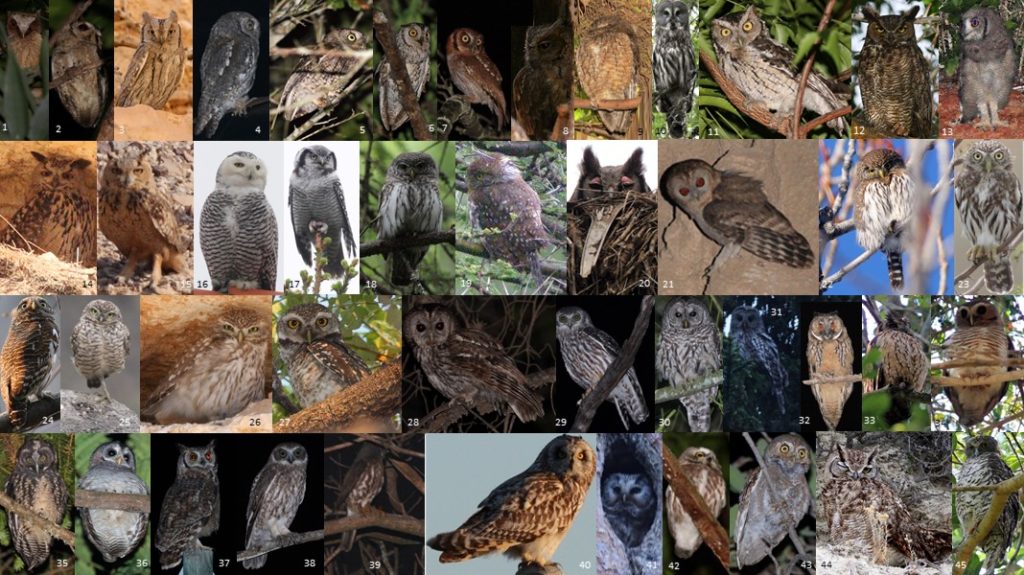

Research its tolerance of degraded forest. Continue to monitor trends in forest loss. Identify and effectively protect a network of reserves, including some containing large areas of unlogged lowland forest, on New Britain. Over 30% of suitable habitat has been cleared in the last 10 years and this trend is ongoing (Buchanan et al. Lowland forest clearance on New Britain for conversion to oil palm plantations has been intense in recent decades and the island accounts for approximately half of Papua New Guinea's timber exports (Buchanan et al. The population is estimated to be in the band 10,000-19,999. It is thought to tolerate some degree of habitat degradation. Population justification: This species is widespread and relatively common for a small owl. It inhabits lowland rainforest up to 1,200 m. Hence, this decline is expected to continue. Ninox odiosa - The birds of New Guinea and the adjacent Papuan islands : including many new species recently discovered in Australia.
#NINOX ODIOSA FREE#
Free for commercial use, no attribution required. Ninoxe aboyeuse Un article de Wikipedia, l encyclopédie libre.
#NINOX ODIOSA DOWNLOAD#
(2008) calculated the rate of forest loss within the species's range on New Britain as 33.8% over three generations. Youll love the Ninox Odiosa New Britain Hawk-Owl by John Gould - Graphic Art at Wayfair - Great Deals on all Dcor & Pillows products with Free Shipping on. Download Image of Ninox odiosa - The Birds of New Guinea. Ninox odiosa Ninoxe odieuse Ninox jacquinoti Ninoxe de Jacquinot Ninox sumbaensis Ninoxe mineure Uroglaux dimorpha.

The population is estimated to be in the band 10,000-19,999 mature individuals, equating to 15,000-29,999 individuals in total, rounded here to 15,000-30,000 individuals.īuchanan et al. The New Britain boobook (Ninox odiosa), also known as the spangled boobook, New Britain hawk-owl or Russet hawk-owl, is a small owl that is endemic to New Britain, the largest island in the Bismarck Archipelago in Papua New Guinea. It is suspected to have declined rapidly in recent years owing to ongoing clearance of lowland forest (Buchanan et al. Ninox odiosa is endemic to the island of New Britain Papua New Guinea where although it is rather poorly known, it appears to be not uncommon in suitable habitat. (2005) website, Zoonomen - Zoological Nomenclature Resource, 2005.08.This speciesis classified as Vulnerable because remote-sensing data indicate that there has been a dramatic loss of lowland forest across its range and that it is therefore likely to be undergoing a rapid population decline. Gill, Frank, and Minturn Wright (2006) Birds of the World: Recommended English Names - via Catalogue of Life via Integrated Taxonomic Information System (ITIS) Birds of the World: Recommended English Names. References Gill, Frank, and Minturn Wright, 2006: null. Spangled Boobook, New Britain Boobook, Russet Hawk-owl / New Britain Boobook, Alvefalkugle, Gufastore Di New Britain, Gylden Høgeugle, Naujosios Britanijos Aštrianagė Pelėda, Neubritannienkauz, New-britainvalkuil, Ninoxe Odieuse, Nínox De Nueva Bretaña, Newbritainspökuggla, Nínox De Nova Bretanya, Sovka Novobritská, Sovka škoricová, Sowica Cynamonowa, Uudenenglanninpöllö, Uusbritannia Haugaskakk, új-brittaniai Héjabagoly, Новобританская иглоногая сова, ニューブリテンアオバズク, 新不列顛島鷹鴞, 新不列颠鹰鸮, Bismarck-kauz Original Description: Sclater, Philip Lutley. Listed as Vulnerable by Birdlife International. Range of the New Britain Boobook Ninox odiosa. Life : Animalia : Chordata : Aves : Strigiformes : Strigidae : Ninox : Ninox odiosa Distribution: Endemic to New Britain in the Bismarck Archipelago off eastern New Guinea.

Parcourez les exemples dutilisation de Ninox odiosa dans le grand corpus de français. Global Biodiversity Information Facility ID (GBIF) Vérifiez la prononciation, les synonymes et la grammaire.
#NINOX ODIOSA LICENSE#
From Wikipedia article at, which is released under the Creative Commons Attribution-Share-Alike License 3.0.


 0 kommentar(er)
0 kommentar(er)
